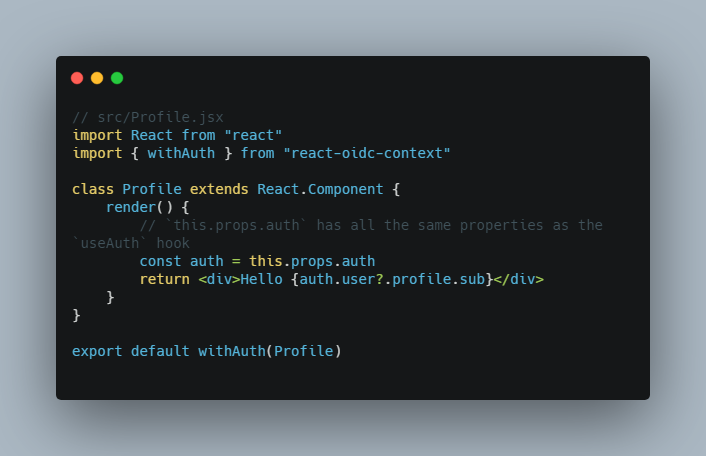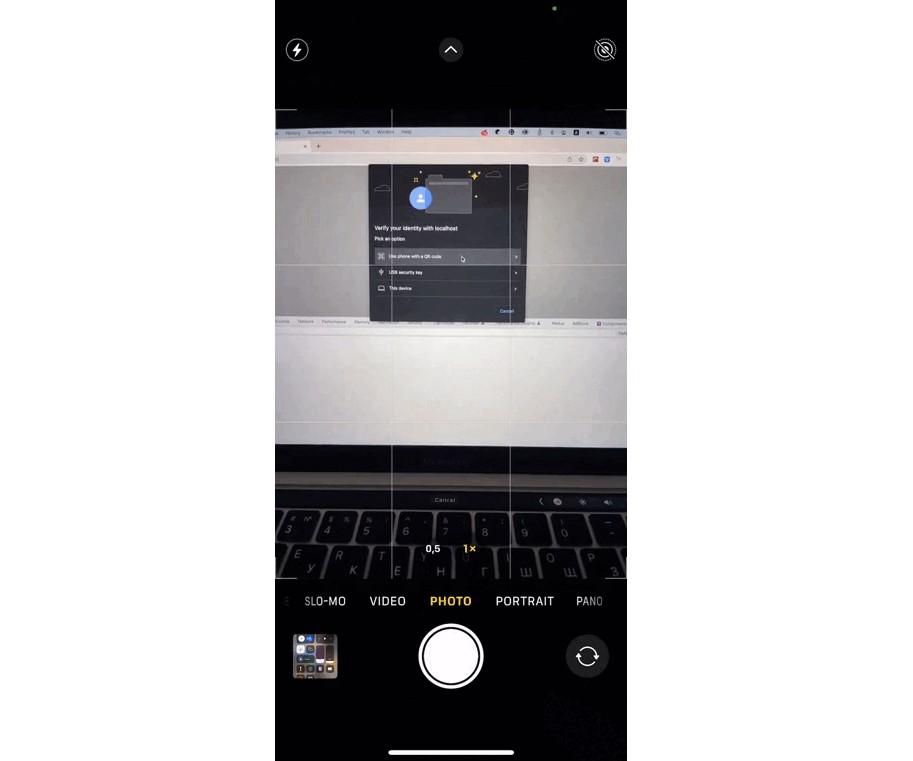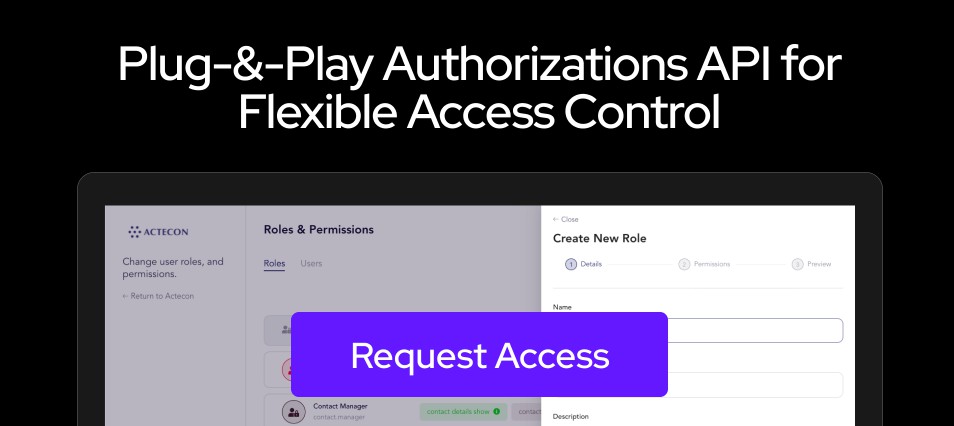react-oidc-context
Lightweight auth library using the oidc-client library for React single page applications (SPA). Support for hooks and higher-order components (HOC).
Documentation
This library implements an auth context provider by making use of the oidc-client library. Its configuration is
tight coupled to that library.
The User and UserManager is hold in this context, which is accessible from the React application. Additionally it intercepts
the auth redirects by looking at the query/fragment parameters and acts accordingly. You still need to setup a redirect uri,
which must point to your application, but you do not need to create that route.
Installation
Using npm
npm install react-oidc-context
Getting Started
Configure the library by wrapping your application in AuthProvider:
// src/index.jsx
import React from "react"
import ReactDOM from "react-dom"
import { AuthProvider } from "react-oidc-context"
import App from "./App"
const oidcConfig = {
authority: <your authority>,
client_id: <your client id>,
redirect_uri: <your redirect uri>,
...
}
ReactDOM.render(
<AuthProvider {...oidcConfig}>
<App />
</AuthProvider>,
document.getElementById("app")
)
Use the useAuth hook in your components to access authentication state (isLoading, isAuthenticated and user) and
authentication methods (signinRedirect, removeUser and signOutRedirect):
// src/App.jsx
import React from "react"
import { useAuth } from "react-oidc-context"
function App() {
const auth = useAuth()
if (auth.isLoading) {
return <div>Loading...</div>
}
if (auth.error) {
return <div>Oops... {auth.error.message}</div>
}
if (auth.isAuthenticated) {
return (
<div>
Hello {auth.user?.profile.sub}{" "}
<button onClick={auth.removeUser}>
Log out
</button>
</div>
)
}
return <button onClick={auth.signinRedirect}>Log in</button>
}
export default App
Use with a Class Component
Use the withAuth higher-order component to add the auth property to class components:
// src/Profile.jsx
import React from "react"
import { withAuth } from "react-oidc-context"
class Profile extends React.Component {
render() {
// `this.props.auth` has all the same properties as the `useAuth` hook
const auth = this.props.auth
return <div>Hello {auth.user?.profile.sub}</div>
}
}
export default withAuth(Profile)
Call a protected API
As a child of AuthProvider with a user containing an access token:
// src/Posts.jsx
import React from "react"
import { useAuth } from "react-oidc-context"
const Posts = () => {
const auth = useAuth()
const [posts, setPosts] = useState(null)
React.useEffect(() => {
(async () => {
try {
const token = auth.user?.access_token
const response = await fetch("https://api.example.com/posts", {
headers: {
Authorization: `Bearer ${token}`,
},
})
setPosts(await response.json())
} catch (e) {
console.error(e)
}
})()
}, [auth])
if (!posts) {
return <div>Loading...</div>
}
return (
<ul>
{posts.map((post, index) => {
return <li key={index}>{post}</li>
})}
</ul>
)
}
export default Posts
As not a child of AuthProvider (e.g. redux slice) when using local storage (WebStorageStateStore) for the user
containing an access token:
// src/slice.js
import { User } from "oidc-client"
function getUser() {
const oidcStorage = localStorage.getItem(`oidc.user:<your authority>:<your client id>`)
if (!oidcStorage) {
return null
}
return User.fromStorageString(oidcStorage)
}
export const getPosts = createAsyncThunk(
"store/getPosts",
async () => {
const user = getUser()
const token = user?.access_token
return fetch("https://api.example.com/posts", {
headers: {
Authorization: `Bearer ${token}`,
},
})
},
...
)
Contributing
We appreciate feedback and contribution to this repo!
Influences
This library is inspired by oidc-react, which lacks error handling and auth0-react, which is focued on auth0.
License
This project is licensed under the MIT license. See the LICENSE file for more info.





